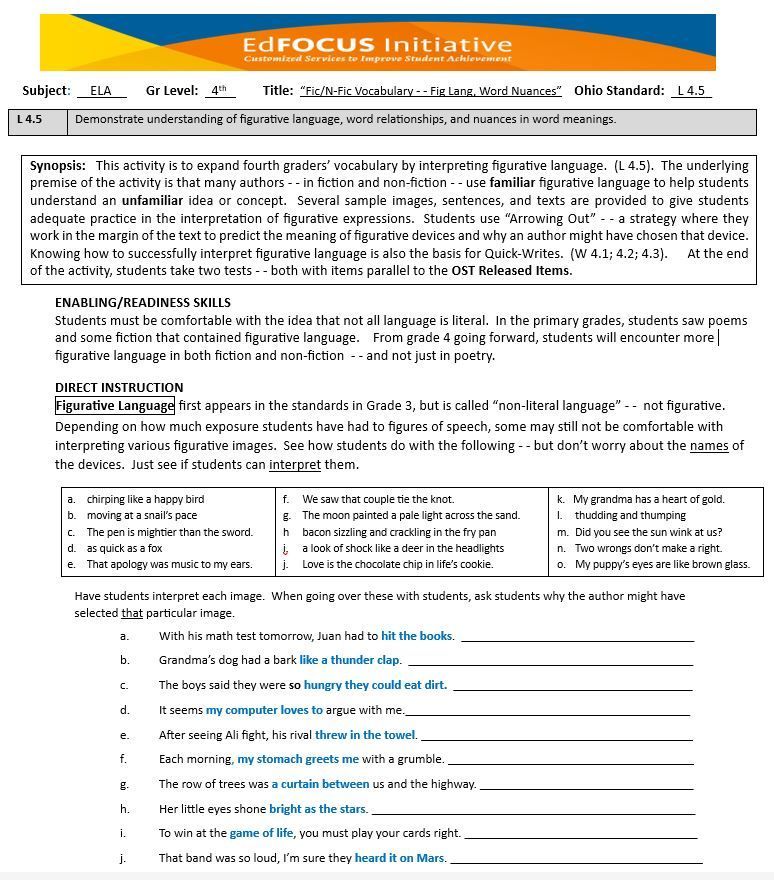Activity Description
Title: Fiction/Non-Fiction- - Figurative Language and Word Nuances
This ACTIVITY has a set of teaching-learning strategies proven to increase student mastery of the critical vocabulary-growth skill - - interpreting figurative language and word nuances. The underlying premise of the activity is that many fiction and non-fiction authors use familiar figurative language to help students understand an unfamiliar idea or concept. Several sample images, sentences, and texts are provided to give students practice in the interpretation of figurative expressions and word nuances. Students use “Arrowing Out” to work in the margin of the text to predict the meaning of figurative devices and why an author might have chosen that device. Knowing how to successfully interpret figurative language is also the basis for Quick-Writes (W 4.1; 4.2; 4.3). [ At Grades K-5, each Activity attaches student-sized texts, templates, and test items that teachers can quickly print and use immediately in class.]
Enabling Skills: For this Activity, students should bring the realization that not all language is literal. In the primary grades, students saw poems and some fiction that contained figurative language. From grade 4 on, students will encounter more figurative language in both fiction and non-fiction - - not just poetry.
Direct Instruction: Suggested teaching strategies are given that model for students what they need to do to begin their journey toward mastery. These strategies include interpreting simple figurative language; using figurative devices in writing; “arrowing out” in full text to predict (and then verify or correct) the meaning of figurative words and phrases; interpreting homophones and homographs; using synonyms and antonyms; and observing different shades of meaning. The activities are designed for students to construct meaning for themselves.
Quick-Writes: Standards-based writing prompts are provided that require students to document that they have internalized the core ideas of the standard(s) and can show independent mastery. In this Activity, students write original sentences to show their understanding of figurative devices and word nuances - - and why an author might have chosen that particular image to communicate his or her message.
High-Stakes Look-Alike Assessments: At Grades 3-8, the Activities include two tests - - one for practice - - followed by classroom analysis of errors made - - and the second test to determine mastery. The test items are constructed to look exactly like those items students will encounter on their High-Stakes Tests.
CUSTOMER: Thanks for considering this Activity as part of your approach to your state’s ELA standards. If you have any comments as to how it worked - - or didn’t! - - we’d welcome them! See the contact information to send us feedback. - - the EdFOCUS Team
This teaching activity comes with one hour of online instruction and guidance from a trained EdFOCUS professional. You will be contacted shortly after purchase with more details.
Product Page

